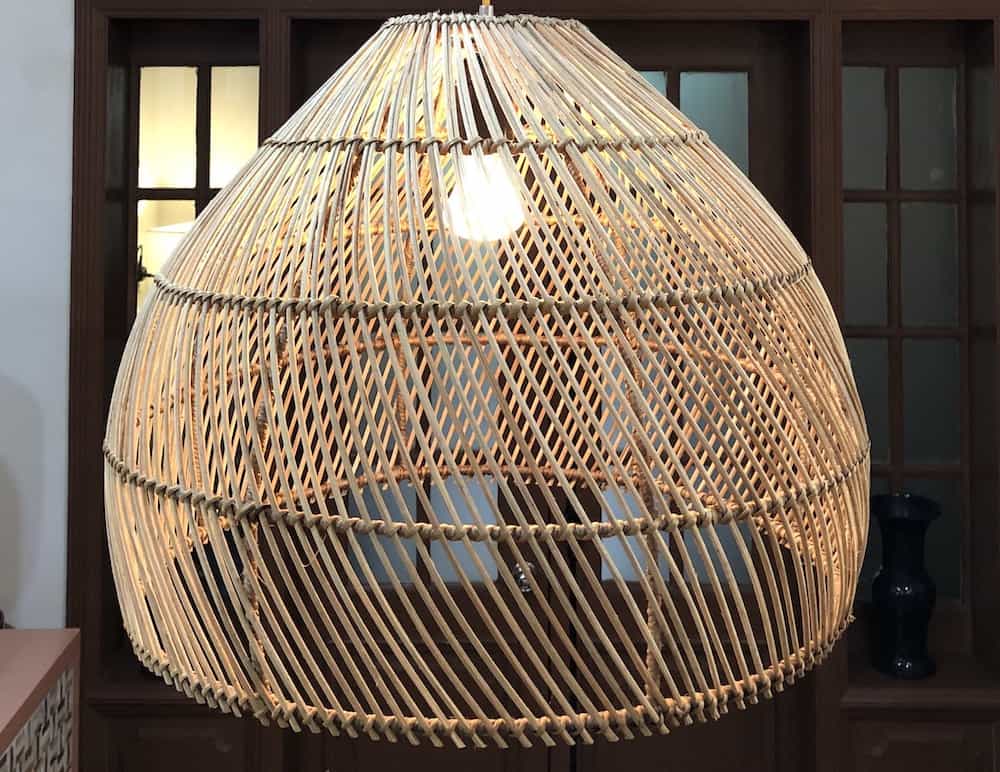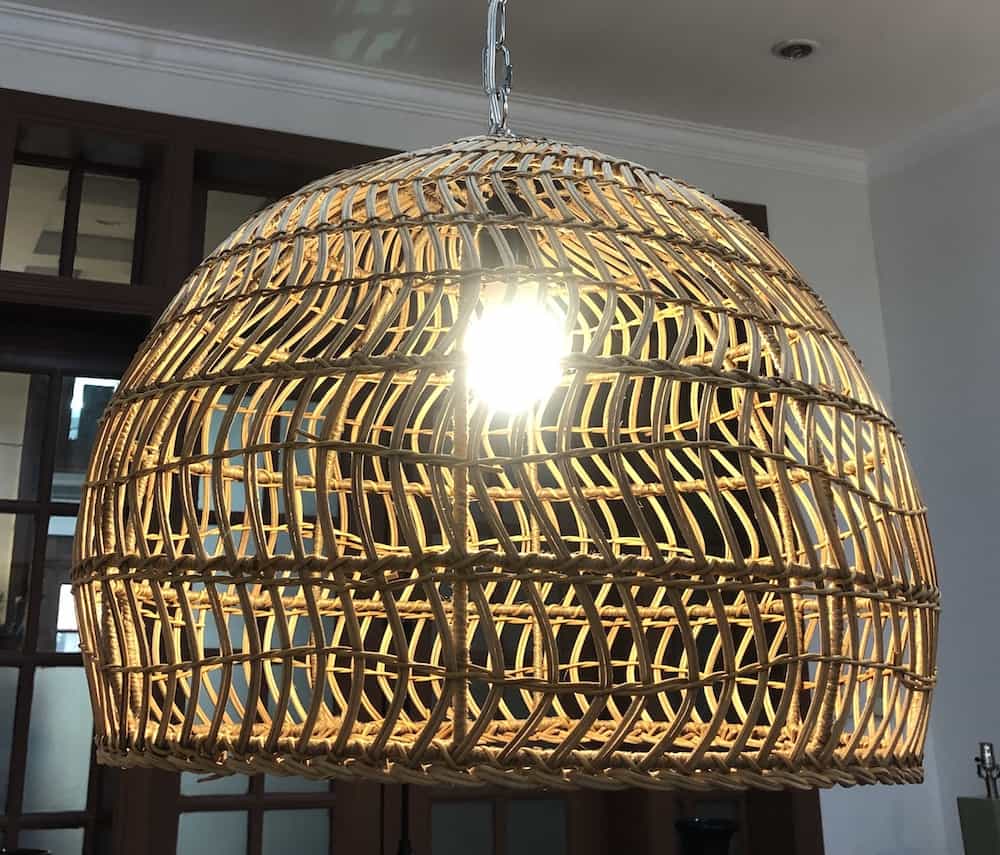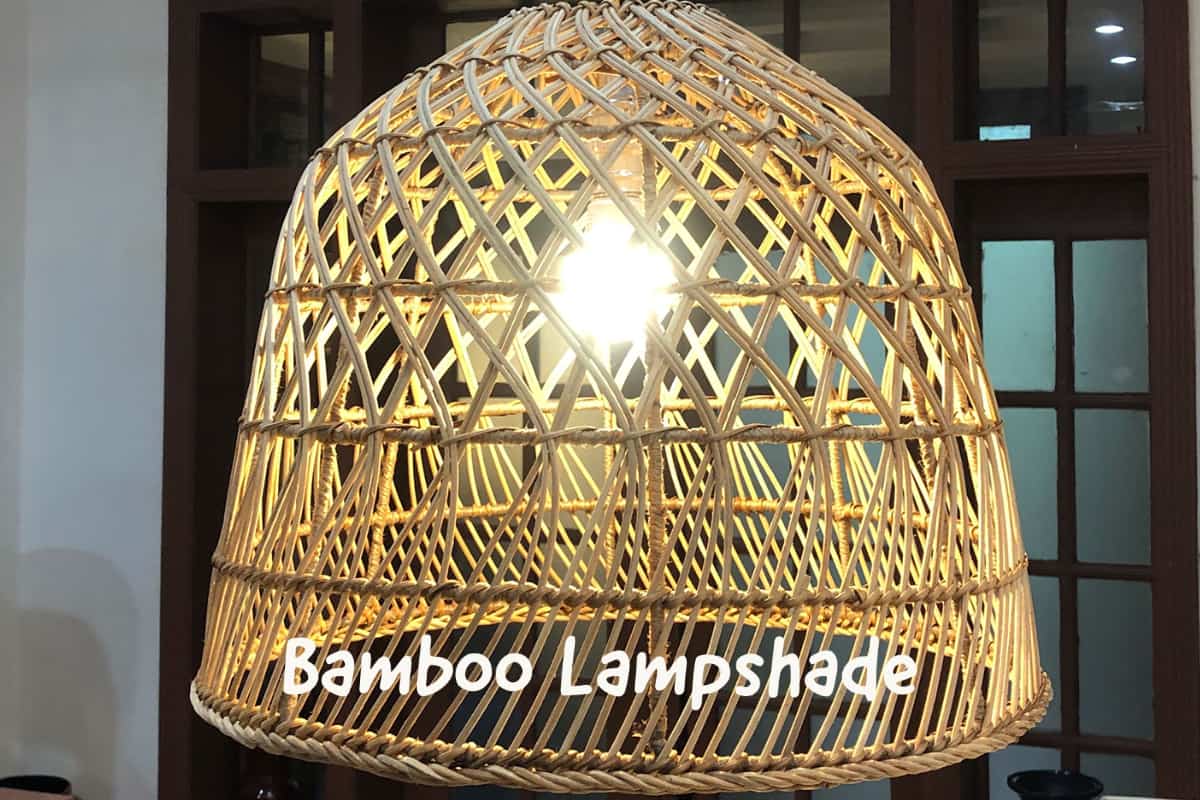Natural elements in the home continue to be an essential home decor and home furnishing trend. One way to bring in some lovely natural elements is through a bamboo lampshade. At Mondoro, we manufacture bamboo lampshades.
To manufacture or make bamboo lampshades, you need to 1) properly prepare the bamboo materials, 2) build a metal frame, 3) wrap the metal frame, 4) secure the bamboo onto the metal frame, 5) spray color on top of the bamboo shade if you desire the lampshade to be a color other than natural and 6) spray a top coat on the entire shade to protect the bamboo shade’s finish.
Table of Contents
- How Do You Make A Bamboo Lamp Shade?
- Basic Steps to Manufacturing A Bamboo Lampshade
- Frequently Asked Questions
- Related Questions
How Do You Make A Bamboo Lamp Shade?
Making a bamboo lampshade requires some skill; many steps must be taken in the making of the lampshade. Making a bamboo lampshade requires someone who understands how to work with the bamboo raw material and how to weave the material onto a frame.

Basic Steps to Manufacturing A Bamboo Lampshade
For centuries, bamboo has been used around the world in many different ways. Its use as a lampshade material is gaining popularity due to its natural beauty and durability.
Read on as we guide you through the basic steps we take to manufacture a bamboo lampshade
Cut The Bamboo
Bamboo is a tough and straight material; this is a great quality about bamboo, but it also means the material must be cut into tiny pieces to be woven.
If you want to learn more about the bamboo plant, you can read our blog Bamboo – An Auspicious Plant For Your Home by clicking here.
Preparing the correct materials is one of the most important things for manufacturing a bamboo lampshade. The bamboo must be split into tiny pieces to bend and be used to weave the shade.
Prepare the Metal Frame
Most bamboo shades have a metal frame to them. The reason is that the metal frame will allow the bamboo shade to keep its shape.
When manufacturing a bamboo shade, you should have a proper frame, which is one of the most important things you should do. This metal frame should also be powder coated properly so that the metal frame will not rust.
Some people may try to use bamboo material to make the frame. We have also seen this done. But we chose not to use bamboo as we feel like the metal gives a thinner look than if we used bamboo.
With the metal frame, we can ensure that the entire lampshade is uniform. Sometimes if you use bamboo material for the frame, the frame may not be perfectly formed.
Wrap The Frame
Even though we use a metal frame for our bamboo lampshades, we do not like to have the metal frame show through onto our finished lampshade. This is because we want the entire lampshade to still look completely natural.
We always try to go the extra step of wrapping the entire metal frame with a natural material like seagrass. If cost is considered, you may not want to do this extra step of wrapping the frame as it will cost more than just a plain metal frame.
If you want a high-end look in your bamboo lampshade, you should consider wrapping the entire metal frame in a natural material. We believe there are many advantages to wrapping your metal frame, but one of the main advantages is that you can not see any of the metal.

Secure the Bamboo Onto the Metal Frame
Once your metal frame is completed, you can place bamboo strips onto the frame. This step requires that you have some skills to weave the bamboo onto the frame.
This step requires a high skill level because it will not come off the frame once the bamboo is secured. It also takes high skill to wrap the bamboo evenly and neatly so the frame.
Because this is what most people will see, securing the bamboo strips onto the frame is one of the process’s most essential and challenging steps. Our weavers have been weaving with bamboo for most of their lives, so they have the skills to weave it onto the frame properly.
Spray the Color On the Bamboo Lampshade
If you want your bamboo shade to be a color other than the natural bamboo color, you can spray the color onto the bamboo shade once the weaving is completed. We spray the color on vs. brushing it on because a spray will give it a much cleaner finish.
You only need to do this step if you want a bamboo shade other than the natural color. If you want your shade to be natural, skip this step in the bamboo lampshade-making process.
Spray on the Topcoat on the Shade
Whether you have the color on the shade or want the shade to be a natural color, you should spray a top coat onto the bamboo lampshade. A top coat will help you protect the overall lampshade.
We like to use a topcoat with a matt or semi-gloss coat on top of it. You can spray a glossy top coat if the shade is shiny.
We love the look of the natural bamboo lampshades. They are a great addition to anyone’s home decor. They also have a look and feel that is now right on-trend.
If you are interested in Bamboo shades for your home decor and home furnishing collection, we would love to hear from you and see how we can help you.
Find out more about how Mondoro can help you create, develop, and manufacture excellent home decor and furniture products – don’t hesitate to contact me, Anita. Check out my email by clicking here, or become a part of our community and join our newsletter by clicking here.
Mondoro gives out a FREE Lookbook to anyone interested. You can receive a copy of our latest Lookbook by clicking here.
Listen to our Podcast called Global Trade Gal. You can find it on all major podcast platforms. Try out listening to one of our podcasts by clicking here.
Subscribe to our Mondoro Company Limited YouTube Channel filled with great videos and information by clicking here.
Frequently Asked Questions
What is the procedure for making a bamboo lampshade?
The procedure for making a bamboo lamp shade typically involves cutting and preparing bamboo strips, creating the frame, weaving or attaching the strips to form the shade, and adding finishing touches like a base or a light fixture.
How long does it take to make a bamboo lampshade?
The time required to make a bamboo lamp shade can vary depending on the complexity of the design, your skill level, and the tools at your disposal. It can take several hours or even a few days to complete the entire process.
Can I customize the design of a bamboo lampshade?
Absolutely! One of the advantages of making your own bamboo lampshade is the ability to customize the design. You can experiment with different shapes, patterns, and weaving techniques to create a unique lampshade that suits your taste. If you are looking to manufacture your own lampshade designs – don’t hesitate to contact me, Anita. Check out my email by clicking here or become a part of our community and join our newsletter by clicking here.
Can bamboo lamp shades be used with any light bulb?
Bamboo lamp shades are compatible with various types of light bulbs, including LED, incandescent, and compact fluorescent bulbs. Choose a bulb that fits the socket and provides the desired level of illumination.
Are there any finishing touches I can add to a bamboo lampshade?
: Yes, you can add finishing touches to any of your lampshades. We sometime add gold leafing on your bamboo lampshades.
Where can I find bamboo strips for making a lampshade?
Bamboo strips can be found in craft stores, online marketplaces, or specialty bamboo suppliers. You may also consider sourcing them from bamboo gardens or local bamboo enthusiasts.
Related Questions
What Are The Eco-Friendly Seagrass Materials Used in Home Decor Products?
Seagrass is, exactly as the name implies, a grass that grows in the sea or in saltwater areas. As Vietnam has access to many tropical oceans, seagrass is abundant in Vietnam. Much of the seagrass used for manufacturing home decor products is farmed to be cut and processed specifically for seagrass weaving. This seagrass is cut, dried, spun, dyed, and then woven into many items, including baskets, lampshades, furniture, and area rugs. But seagrass also has some great eco-friendly properties, making it a great alternative to plastic.
You can discover more by reading our blog Eco-Friendly Seagrass Materials Used in Home Decor Products by clicking here.
What is Spun Bamboo?
Spun bamboo was invented in Vietnam over 800 years ago to give a cheaper alternative to the home decor and home utensil materials that were then being used. Spun bamboo is called spun bamboo as it is spun out pieces of bamboo, and then the bamboo pieces are glued together into a form. This spun bamboo production helps women in these villages earn extra income. Spun bamboo is a great natural product and can be used in a variety of home decor and kitchen products.
You can learn more by reading our blog, What is Spun Bamboo? Using Spun Bamboo in Product Development by clicking here.

